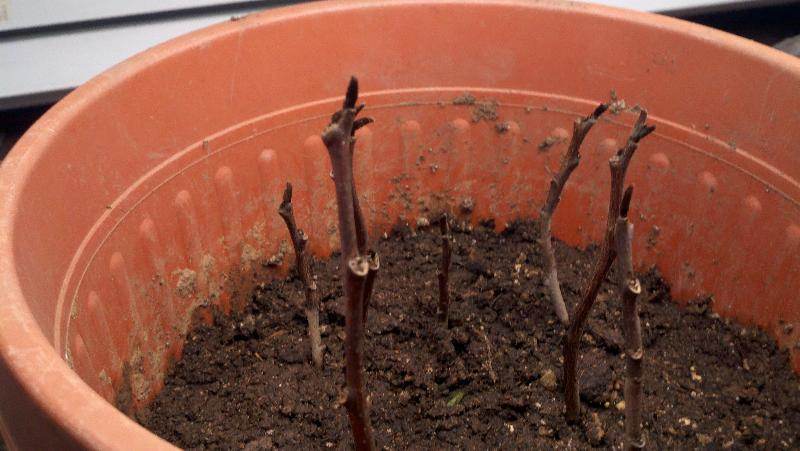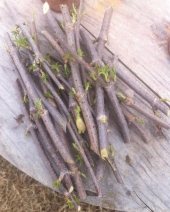










Ask me about food.
How Permies.com Works (lots of useful links)

 1
1




Yes, I'm that David The Good. My books are here: http://amzn.to/2kYcCKp. My daily site is here http://www.thesurvivalgardener.com and my awesome videos are here https://www.youtube.com/subscription_center?add_user=davidthegood




 1
1




Yes, I'm that David The Good. My books are here: http://amzn.to/2kYcCKp. My daily site is here http://www.thesurvivalgardener.com and my awesome videos are here https://www.youtube.com/subscription_center?add_user=davidthegood




David Goodman wrote:To add extra help in keeping moisture in, I'd put a plastic bag over the top of the pot. I do that with my cuttings and it's definitely increased the strike rate. If you're worried about mold, etc, you could take that cover off and mist them as you think of it, then put it back on. The extra humidity is a lifesaver.
 1
1




Yes, I'm that David The Good. My books are here: http://amzn.to/2kYcCKp. My daily site is here http://www.thesurvivalgardener.com and my awesome videos are here https://www.youtube.com/subscription_center?add_user=davidthegood










 1
1




Yes, I'm that David The Good. My books are here: http://amzn.to/2kYcCKp. My daily site is here http://www.thesurvivalgardener.com and my awesome videos are here https://www.youtube.com/subscription_center?add_user=davidthegood




David Goodman wrote:Looks promising.
I had mulberries do the same thing once... without producing a single root. Two months they sat, leafed out, then wilted and died.
When figs leaf out, though, it usually means they've taken.
I'm keeping my fingers crossed and hoping your pawpaws are more like the latter!




Yes, I'm that David The Good. My books are here: http://amzn.to/2kYcCKp. My daily site is here http://www.thesurvivalgardener.com and my awesome videos are here https://www.youtube.com/subscription_center?add_user=davidthegood




 1
1




Yes, I'm that David The Good. My books are here: http://amzn.to/2kYcCKp. My daily site is here http://www.thesurvivalgardener.com and my awesome videos are here https://www.youtube.com/subscription_center?add_user=davidthegood




A lot of things come out of nowhere, so look everywhere.




David Goodman wrote:I just found this: http://www.pawpaw.kysu.edu/PDF/geneve03.pdf
"Unfortunately, in a systematic study using over 1200 stem cuttings taken from mature flowering trees only one cutting produced an adventitious root..."
Real encouraging stuff.








John Layland wrote:It's been a few months, and I'm really curious if you had any luck? I'm looking to grow PawPaws in zone 4b and from what I hear grafts don't survive our winters, so my only options would be PawPaws started from seed, or rooting a cutting from a known hardy and early ripening specimen or preferably two.

|
There is no greater crime than stealing somebody's best friend. I miss you tiny ad:
The new kickstarter is now live!
https://www.kickstarter.com/projects/paulwheaton/garden-cards
|




